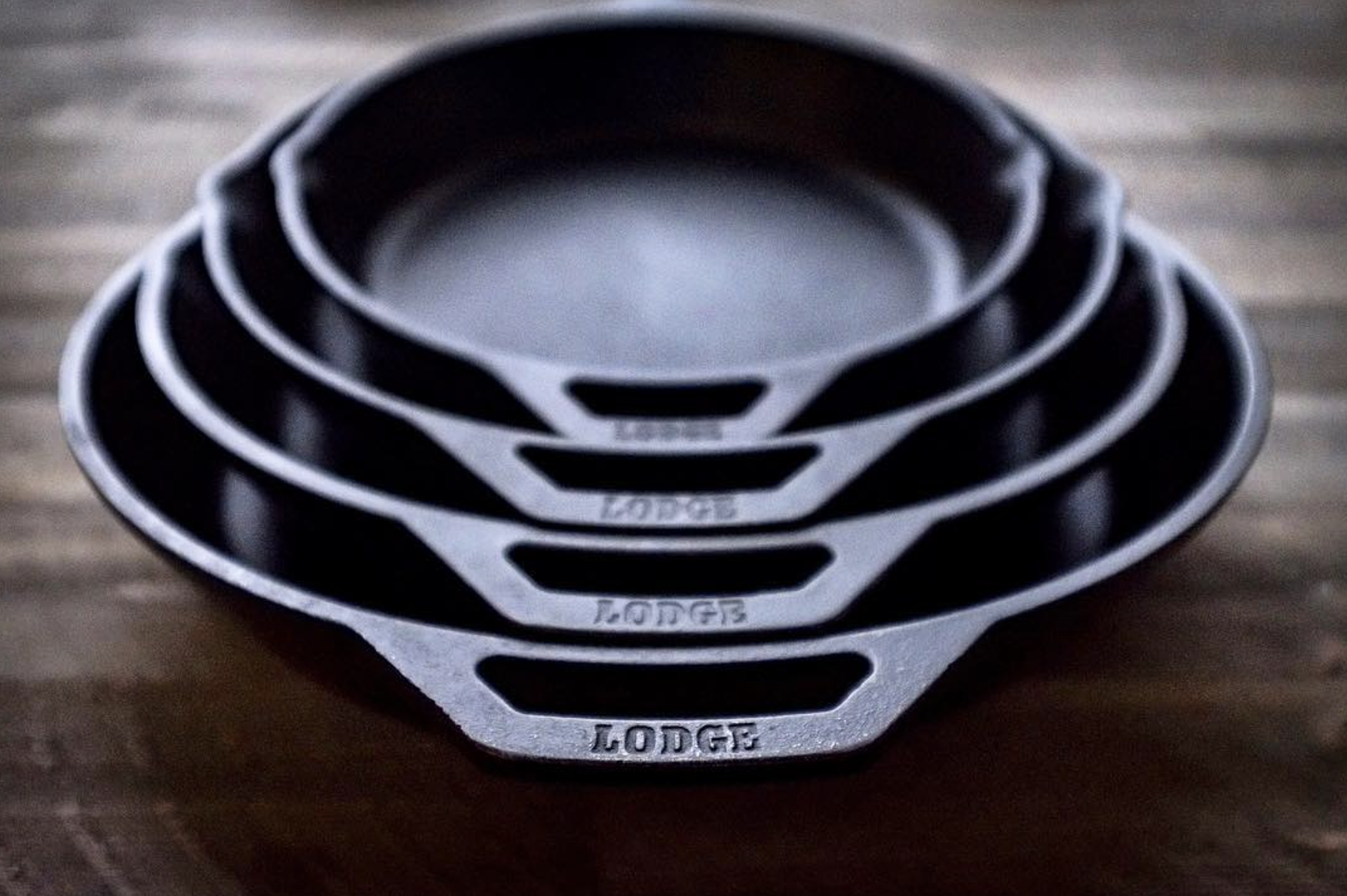
“A cast iron skillet should season easily, and remain seasoned.”
How I Season My Cast Iron Cookware
The following is a seasoning method that works well for both antique cast iron cookware as well as modern cast iron cookware. I currently have about 165 pieces of cast iron, which is nothing compared to others. But, I have a lot of experience seasoning cast iron and have finally settled on a method that seasons well, plus gives my skillets a beautiful look while being totally dry. You can’t argue with the photos.
This method is the culmination of reading and testing so many other methods. I have just taken all of the little things that seem to work and combined them into what I feel is one solid method. To say this is ‘my method’ is true only in the fact that I have personally tested a ton of different methods to do this and have finally settled on a combination that is rock solid. So, thanks to anyone who has ever posted anything about seasoning – good or bad
There are a ton of other methods you can use to season your cast iron cookware. Most of them are right in a lot of ways. This is just a tried and tested method that has worked extremely well for me.
Heat oven to 200 degrees
Put skillet in oven upside down and allow it to heat to 200 degrees. Approximately 20 minutes should be fine.
Remove skillet from oven. Apply a liberal amount of Crisco shortening with a lint-free cotton rag.
After applying the Crisco shortening, wipe it all off with an absorbent paper towel. I use blue Scott shop paper towels that I get from Home Depot. About $2 per roll.
Put skillet back in oven upside down. After putting skillet in back in the oven, increase oven temperature to 300 degrees and set timer for 15 minutes.
After 15 minutes has passed, remove skillet and wipe again – lightly. You will notice that when you remove it this time, any excess oil will have begun to pool. This is good, but the timing here is critical – you don’t want the oil to get cooked on like this.
Place skillet back in oven upside down. Increase oven temperature to 400 degrees and let it go for two hours.
Allow to cool completely in oven.
Repeat if more sheen on your skillet is desired.
Here is why I do it this way – I prefer a very smooth, black patina on my cast iron. Wiping the iron twice keeps it from pooling. Antique cast iron can be hard to season because it is so smooth. A lot of times when I would season at 450-500 degrees, I felt like the shortening was just burning off, and it was. It is so much easier to season a rougher modern Lodge skillet than a really slick Griswold skillet. So, I was looking for a method that worked well for both. I found that 400 degrees was the magic temperature for me. But, with just an hour at 400 degrees, the skillet was still a little tacky. So, I did some testing with two hours at 400. Voila!!! A beautifully seasoned skillet in which the oil adhered nicely and the skillet was not sticky at all.
When a lot of people photograph their cast iron cookware, it looks great because they wipe it down with oil first. I do not. Mine have a beautiful sheen but are totally dry and not sticky. And, they all cook beautifully.
How I Maintain My Cast Iron Cookware
To clean my skillets, I scrape with a Lodge polycarbonate pan scraper (if needed) and then scour with a ScotchBrite non-scratch plastic scouring pad. These are green in color and have a wavy shape to them. I NEVER use soap and I never boil a skillet. (Boiling a skillet is when you put a dirty skillet back on a hot burner with water in it. You boil the water and it tends to soften the cooked on food in the skillet. This is not necessary, and I believe it is harmful to your seasoning.) Then, I place the skillet upside down on a burner on high (gas stove). Once the skillet heats a bit, I coat it with a very light layer of Crisco Shortening. Wipe it off REALLY GOOD with an absorbent paper towel and then place black on the burner upside down. Let it remain until it smokes lightly. Allow to cool. I do this just about every time I cook in a skillet. If skillet cools and it is still a bit tacky, let it stay on the burner a bit longer. Do this every time you clean a skillet and it will be drop-dead gorgeous in no time!
